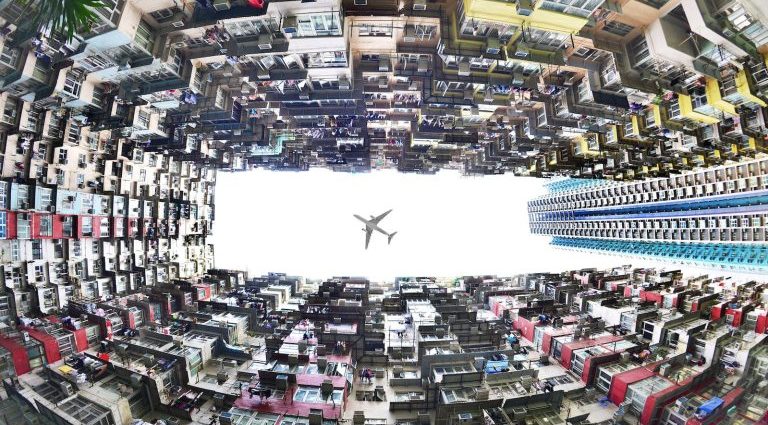Evidence has accumulated that, despite the United States’ export controls, China’s military-related firms, research centers and universities can still acquire Nvidia’s high-end artificial intelligence (AI) chip. Technology experts say the Biden administration has failed so far to stop small distributors from reselling and smuggling the chips into the Chinese underground markets.
The US Commerce Department’s Bureau of Industry and Security (BIS) banned the export of the A100 and H100 chips to China in October 2022 and the export of the A800 and H800 chips to the country last October, but results have not been satisfactory.
One early study, from the Center for a New American Security (CNAS), a Washington-based non-profit organization, said last October that thousands of controlled AI chips could have been smuggled into China in 2023. By 1925, it said, the figure might grow to as many as 12,500 – or even hundreds of thousands – per year.
Some Chinese firms have set up multiple shell companies in third countries, used them to place small orders with AI chip distributors and diverted those chips to China, it said – and some Chinese cloud providers placed bulk orders for AI chips for their overseas data centers and redirected some of these chips to China.
The CNAS suggested that the BIS pilot an AI chip registry and inspection program, as well as end-user verification programs in Southeast Asia. It said AI chip exporters should be required to carry out rigorous customer screening targeted at key vectors for large-scale smuggling.
Now a document obtained by Reuters shows that Chinese state entities have procured Nvidia’s A100 chips in more than 100 tenders since October 2022 and A800 chips in dozens of tenders since last October.
Among the buyers, a Wuxi-based People’s Liberation Army entity purchased three A100 chips last October and one H100 chip this month. The Harbin Institute of Technology, one of China’s top defense-research universities, purchased six A100 chips in May 2023. The University of Electronic Science and Technology of China, based in Chengdu, bought one A100 in December 2022.
Reuters reported that these Chinese entities’ chip suppliers are not retailers approved by Nvidia. In other words, some third parties may have resold Nvidia’s AI chips to China. Nvidia’s spokesperson told Reuters that the company will take immediate and appropriate action if it knows that a customer has made an unlawful resale to third parties.
AI chip registry system
Violations are hidden in plain sight, commentators say.
An IT writer using the pen name “Chenyi” says in an article published by Xinchao IC last November that it’s not difficult to see distributors, who claim to have A100 and H100 chips for sale, over social media and e-commerce platforms in China.
“These sellers mostly come from southern China and have their secret supply channels. They can send AI chips from overseas to mainland China but they don’t provide any post-sale services,” Chenyi says.
He says the A100 was priced at about 40,000 yuan (US$5,600) in China in February 2023 but the price surged to 250,000 yuan in May.
He says sellers then started speculating in the H100, which is several times faster than the A100 in AI training, in June. He says the H100 is now sold at about 320,000 yuan each, a 50% premium over the official price of US$30,000.
In the US, technology giants including Amazon Web Services, Meta, Microsoft and OpenAI are also facing insufficient supplies of the H100.
Smuggling channels
The US Commerce Department as early as 2021 had classified Hong Kong as one of its “foreign adversaries,” alongside mainland China, Iran, North Korea and Russia. It means that products that are subject to the US export controls cannot be shipped directly to Hong Kong, but must go through third countries to evade the controls.
A Hubei-based columnist published an article with the title “How to obtain A100 chips in China?” last July.
He says most of the A100 chips came from smuggling channels in Malaysia, Singapore and Hong Kong to mainland China. He says some sellers would require buyers to complete their deals in Hong Kong.
“As Nvidia will not provide any warranty and post-sale services for the banned A100 display card in China, anyone who bought it will suffer from a huge loss if it has problems,” the writer says. “There is no way that a faulty A100 can be shipped overseas for repair or be protected by an official warranty scheme.”
Last April, Hong Kong Customs said it seized 70 pieces of unmanifested high-value computer display cards, plus about 280 kilograms of unmanifested live lobsters, in an anti-smuggling operation at the Hong Kong-Zhuhai-Macao Bridge Hong Kong Port. It said the products had a total estimated market value of about HK$600,000 (US$76,669). Two men were arrested.
Taiwanese media said the seized display cards look like Quadro K2200 cards, which were launched by Nvidia in 2014 and are not subject to US export controls.
US Authorities have vowed to close loopholes in the export restrictions and have tried to prevent overseas Chinese firms from having access to Nvidia’s high-end chips. But until now, they have not suggested any effective solutions that can stop the illegal resale and smuggling of high-end chips to China.
Read: US-China chip war may extend to legacy chips
Follow Jeff Pao on Twitter at @jeffpao3

